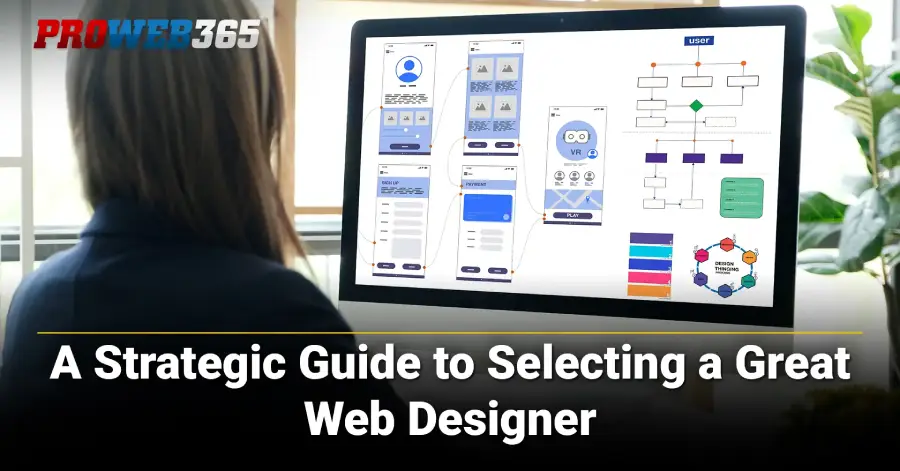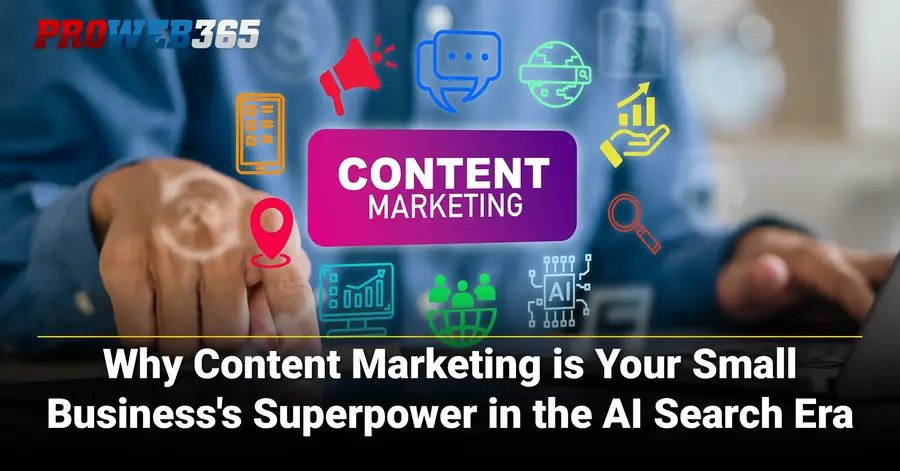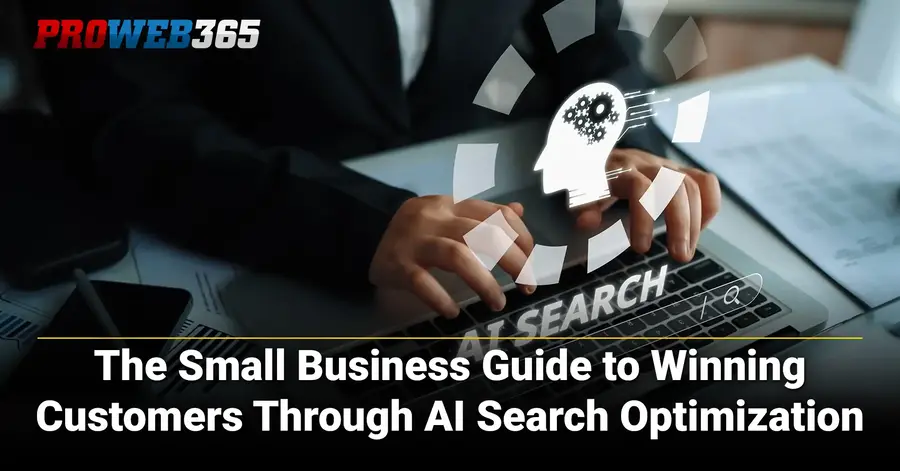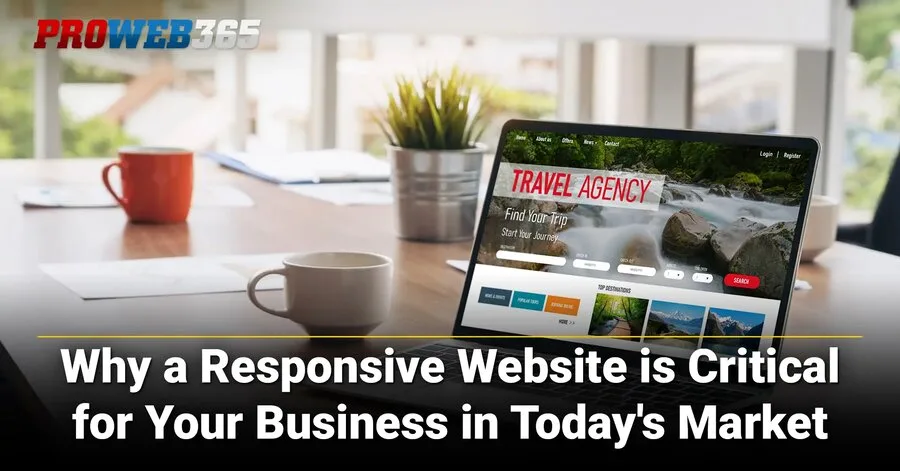How CMS Websites Offer Budget-Friendliness and Strategic Flexibility for Businesses
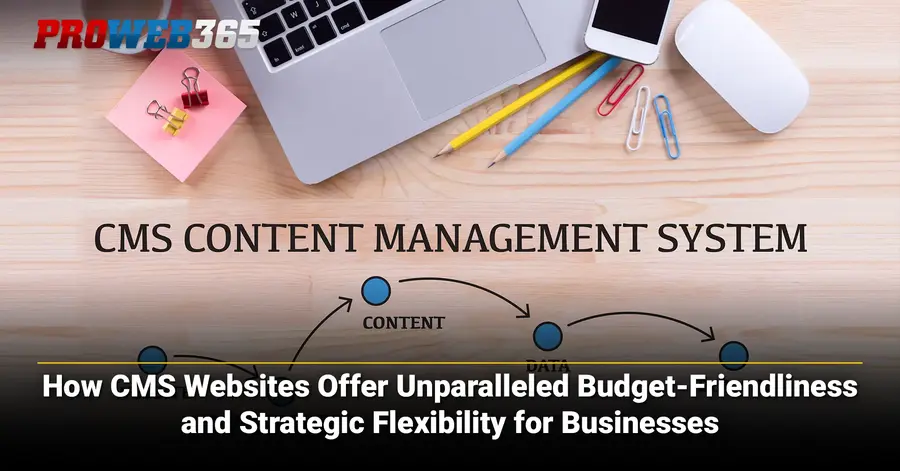
Content Management Systems (CMS) empower small to mid-size businesses (SMBs) to build and grow their online presence affordably and efficiently. To better understand, a report on how CMS platforms offer cost-effectiveness and remarkable adaptability, enabling small to medium businesses (SMBs) to scale and evolve with market demands, can be found below. A CMS provides accessibility and capability, allowing SMBs to compete digitally without prohibitive costs or technical barriers.
CMS adoption addresses SMB common beginner challenges, such as limited IT and marketing resources. Unlike traditional web solutions, CMS platforms level the playing field for web presence through user-friendly interfaces, pre-built templates, and extensive plugins. This means even businesses with minimal technical staff or budgets can launch and maintain professional websites.
Having such accessibility boosts their market participation, allowing focus to be on core business activities while leveraging a robust online presence. A well-chosen CMS helps SMBs build credibility, reach wider audiences, and implement sophisticated digital marketing strategies, leveling the competitive playing field for sustainable growth.
Key Takeaways for SMBs:
- Strategic Investment: A CMS should be viewed not only as a website tool but as a strategic investment in your business's digital future. It is an enabler of growth, operational efficiency, and competitive advantage.
- Understand Total Cost of Ownership (TCO): Always look beyond the initial price tag. A comprehensive understanding of TCO, factoring in all potential ongoing expenses such as hosting, premium add-ons, maintenance, and security, is crucial to avoid unexpected expenses and ensure long-term sustainability.
- Prioritize Needs and Goals: The most effective CMS is one that aligns precisely with your current business objectives and possesses the inherent scalability to support your future growth aspirations. A misfit can lead to costly inefficiencies or premature re-platforming.
- Embrace Flexibility: Leverage the multitude of options for themes, plugins, and integration capabilities offered. This flexibility allows the site to adapt and evolve as your business needs change, ensuring it remains relevant and effective.
- Stay Vigilant on Security & Performance: Ongoing maintenance, regular updates, and continuous optimization are non-negotiable. These practices are vital for protecting your digital assets from vulnerabilities and ensuring a positive, fast, and reliable user experience, which directly impacts your brand reputation and search engine visibility.
- Empower Your Team: Utilize the user-friendly nature of CMS platforms to empower your internal staff. This reduces reliance on external vendors for routine updates and content management, fostering greater autonomy, speeding up content deployment, and significantly contributing to cost savings.
A Strategic Guide to Selecting a Great Website Designer
When you're a small to mid-size business owner or organizations, a website is more than just an online brochure; it's a foundational pillar for your identity, operations, and growth. In the AI era, a professional,...1. Understanding Content Management Systems (CMS): More Than Just a Website
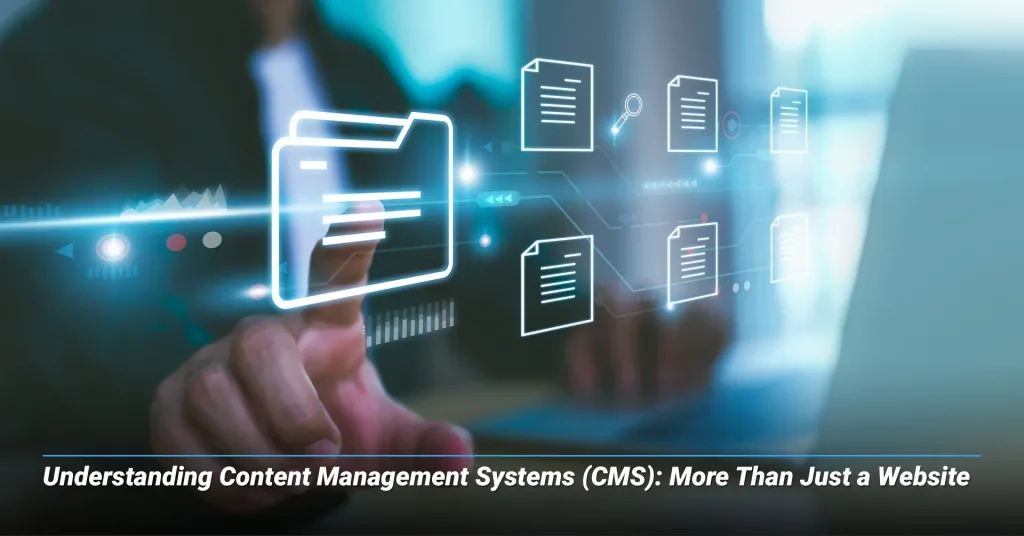
A Content Management System (CMS) is software that lets users create, manage, and modify website content without coding. It separates these assets from design, simplifying updates and expansion.
A. Core Functionality of a CMS
CMS capabilities streamline digital content management:
- Content Creation & Editing: Intuitive interfaces allow easy drafting, editing, and publishing of text, images, and multimedia. WYSIWYG (what-you-see-is-what-you-get) editors show how content appears live, eliminating the need for coding.
- Content Storage & Organization: A structured database stores content efficiently, enabling organization, categorization (e.g., taxonomy), and quick retrieval.
- Design & Layout Management: CMS offers vast themes and templates to create your own brand identity. Drag-and-drop editors allow visual arrangement and modification without code, providing design flexibility.
- User Management: For teams, CMS provides user accounts with different access levels and permissions. This streamlines collaboration, content workflows, and above all, enhances security.
B. Why a CMS is a Strategic Asset for Organizations
A CMS becomes a strategic asset by delivering efficiency and growth:
- Empowerment of Non-Technical Users: A key advantage of CMS is its capacity to provide business owners and their internal teams with the ability to manage their own website content without constant reliance on hiring outside web developers. Autonomy is crucial for agility and cost control.
- Efficiency and Speed: Content can be created, updated, and published quickly, often in real-time, from anywhere. This streamlines operations, allowing rapid response to market changes or timely campaigns.
- Consistency and Branding: Centralized content management and consistent design templates make it easy to maintain a unified brand identity and messaging. Doing so establishes recognition and trust with viewers early on.
The user-friendliness of CMS platforms redefines website management. With a CMS, the focus shifts from building the site to maintaining and optimizing. SMBs can reallocate resources to content marketing, SEO, and user experience to enhance other areas of the business. This allows SMBs to be more agile in digital marketing, adapt faster to trends, and engage audiences dynamically, leading to effective campaigns and a stronger competitive position.
A Guide to Finding a Good Online Marketing Agency
To build a commanding online presence, especially as a mid-size business or organization, a variety of factors need to come together and be executed effectively. Understanding your audience and connecting with them requires a high-performing...2. The Budget-Friendly Advantage of CMS Websites

CMS platforms provide a robust online presence without the high price tag of traditional web solutions, saving money on both initial investment and monthly maintenance.
A. Lowering Initial Investment & Setup Costs
CMS platforms offer models that allow for savings right out of the gate:
- Open-Source vs. Proprietary/Cloud-Based Models:
- Open-Source CMS (e.g., WordPress.org, Joomla, Drupal): The core software is free, eliminating substantial upfront licensing fees (which can be $10,000-$100,000+ annually for proprietary systems).
- Cloud-Based/Website Builders (e.g., Squarespace, Shopify, Webflow): Subscription-based, typically $10-$300/month. This bundle includes hosting, templates, and basic functions, making it easy to get started and calculate overhead each month. .
- DIY vs. Professional Assistance:
- DIY Approach: Many CMS platforms (Squarespace, Shopify) feature drag-and-drop builders requiring no coding. Users can build professional informational websites themselves for $0-$450, cutting down costs in their early stages. AI website builders further reduce this to $5-$30/month, often including hosting and SEO tools.
- Hiring Developers: For open-source CMS or advanced features, developers may be needed. Freelancers charge $50-$150/hour. Comprehensive website projects by agencies can cost $3,000-$50,000. Even then, these reduce overall development time by providing a foundational framework.
B. Reducing Ongoing Maintenance & Operational Expenses
CMS cost savings extend to ongoing operations:
- User-Friendly Interfaces & Internal Management: WYSIWYG editors empower internal teams to handle content updates and minor design adjustments. Doing so allows for quick changes to be implemented, reducing reliance on external vendors or specialized IT staff.
- Community Support & Resources: Popular open-source CMS platforms (WordPress, Joomla, Drupal) have active user bases providing free documentation, tutorials, and forums, reducing reliance on paid technical support.
- Extensive Theme and Plugin Ecosystems: Thousands of pre-built themes and plugins/extensions add functionality without extensive coding. WordPress has over 59,000 free plugins, and Joomla has over 6,000 extensions. Many are free, while premium options cost a fraction of specialized feature creation ($30-$200+ per item).
- Strategic Hosting Choices:
- Shared Hosting: Budget-friendly for smaller sites, $5-$15/month.
- Managed Hosting: For growing businesses, offers enhanced security, backups, and performance for $30-$100+/month.
- Cloud-based CMS often includes hosting in its subscription.
Why Your Brand is THE Most Powerful Asset in the AI Era
As AI begins to reshape browsing, so too is the digital landscape for small to mid-size businesses (SMBs). To go along with the tide, investing in brand strength is crucial for customer acquisition and sustainable...C. Deciphering the Total Cost of Ownership (TCO): Beyond the Sticker Price
A "free" CMS doesn't mean minimal cost. Open-source CMS software is free to license, but this is a fraction of the true Total Cost of Ownership (TCO). Unanticipated "hidden costs" can inflate TCO. True budget-friendliness requires planning for a comprehensive TCO.
SMBs need to take into account hosting, premium themes/plugins, and ongoing developer fees. Security solutions and regular updates also contribute. A "free" open-source platform can incur significant recurring expenses, potentially $10,000-$50,000 per year for WordPress if not managed carefully. This comprehensive view ensures you stay on track financially.
Components of TCO:
- Licensing/Subscription Fees: Free for open-source, monthly for cloud-based, or annual for proprietary systems.
- Hosting Costs: Varies from a few dollars to hundreds per month, depending on whether self-hosted or managed/cloud-based, and traffic.
- Premium Themes & Plugins: $30-$300 per item (one-time) or $50-$500 per year (subscription model).
- Third-Party Integrations: Additional costs for connecting with CRM, email marketing, or e-commerce tools.
- Developer Fees for Customizations/Maintenance: Freelancers ($50-$150/hour) or agencies ($3,000-$50,000+ for comprehensive website projects). Ongoing costs for open-source platforms can add upwards of $5,000+ per year.
- Security & Backup Solutions: Essential. Self-hosted CMS may need separate plugins ($10-$50/month) and backups ($5-$30/month). Managed hosting or cloud-based CMS solutions often include these services as part of their package. Neglecting these can lead to over $100,000 in fines and fees.
- Content Migration Costs: Switching CMS platforms can cost $500-$5,000.
- Training & Staff Adaptation: Initial learning curve for advanced features. Proper training reduces long-term inefficiencies and frustration, saving $25,000-$75,000 per year in lost productivity.
Table: Typical CMS Cost Breakdown for SMBs (Initial vs. Ongoing)
This table provides a clear view of upfront and ongoing costs across different CMS types. This will help SMBs understand the true Total Cost of Ownership and make informed budgeting decisions.
| Cost Category | Open-Source CMS (e.g., WordPress.org) | Cloud-Based Builder (e.g., Wix, Squarespace) | E-commerce Platform (e.g., Shopify) | Notes/Considerations |
|---|---|---|---|---|
| Initial Costs | ||||
| Initial DIY Build | $0 - $450 | Included in subscription | Included in subscription | For basic informational sites, no coding required. |
| Professional Website Design (Optional) | $1,500+; $1,000 - $145,000 | $1,500+ (for custom templates) | $1,500+ (for custom themes) | Varies significantly by complexity and designer expertise. |
| CMS Software/Platform | Free (core software) | $10 - $300/month (subscription) | $29 - $299+/month (subscription) | Open-source software is free but requires hosting. Cloud-based platforms include software/hosting. |
| Domain Name | $10 - $30/year | Often included in higher plans, or $10 - $30/year | Often included in higher plans, or $10 - $30/year | Essential for your website's address. |
| Ongoing Costs (Monthly/Annually) | ||||
| Web Hosting (Shared) | $5 - $15/month | Included in subscription | Included in subscription | Budget-friendly, suitable for smaller websites. |
| Web Hosting (Managed) | $30 - $100+/month | Included in subscription | Included in subscription | Offers enhanced performance, security, and support. |
| Premium Themes/Templates | $30 - $200+ per item | Often included, or $30 - $200+ per item | Often included, or $30 - $200+ per item | For advanced design or specific functionalities. |
| Premium Plugins/Extensions | $50 - $500/year each | Often included, or $50 - $500/year each | Often included, or $50 - $500/year each | For specific functionalities (e.g., e-commerce, SEO, security). |
| Developer Customization (Hourly) | $50 - $150/hour | $50 - $150/hour (for specific platform experts) | $50 - $150/hour (for specific platform experts) | For unique features or complex integrations. |
| Developer Customization (Project/Agency) | $3,000 - $50,000+ (comprehensive website project); $5,000+ per year (ongoing) | Varies widely by project | Varies widely by project | For larger comprehensive projects or ongoing support. |
| Security Solutions | $10 - $50/month; $300 - $2,000/year | Often included in subscription | Often included in subscription | Essential for data protection and site integrity. |
| Backup Solutions | $5 - $30/month | Often included in subscription | Often included in subscription | Crucial for disaster recovery. |
| Ongoing CMS Updates | $0 - $3,500/month (if external dev) | Included in subscription | Included in subscription | Regular updates are vital for security and functionality. |
| SEO Tools/Services | $0 - $800/month | Often included, or $0 - $800/month | Often included, or $0 - $800/month | For optimizing search engine visibility. |
| Potential Migration Costs (if switching) | $500 - $5,000 | $500 - $5,000 | $500 - $5,000 | Crucial for long-term growth; avoid costly re-platforming by choosing wisely. |
How to Redesign Your Non-Profit's Website Without Breaking the Bank
In today's connected world, a non-profit's website is the central nervous system of the organization. It is the front door to your mission, the hub for your community, and the engine for all fundraising efforts....3. The Flexibility & Scalability Power of CMS Websites
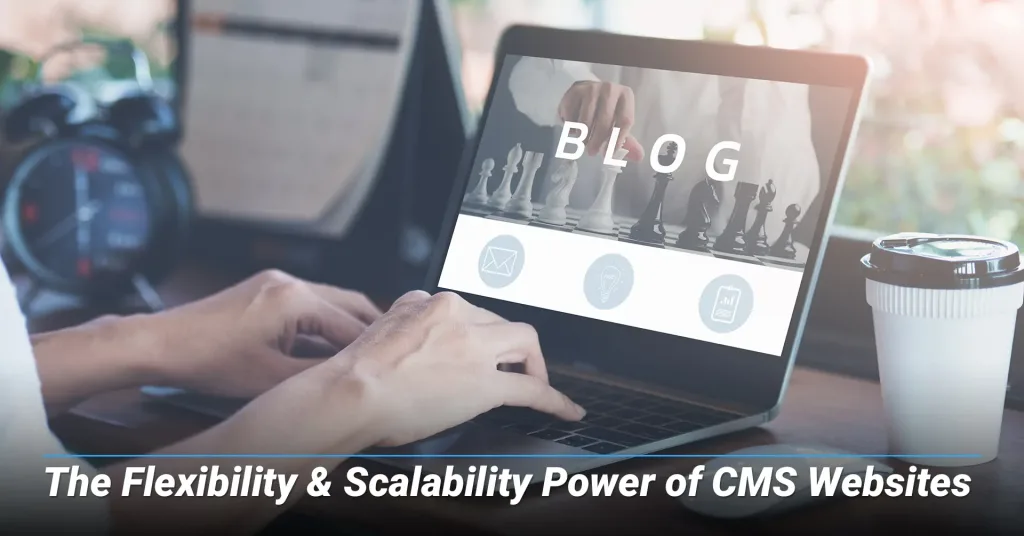
Beyond their cost-effectiveness, CMS platforms offer premier flexibility and scalability, allowing businesses to adapt, grow, and thrive in an always-changing digital landscape. Adaptability is critical for maintaining a competitive edge and responding effectively to market changes.
A. Adaptable Design & Customization for Brand Identity
A core strength of CMS is its ability to provide extensive design freedom and customization options:
- Customizable Templates and Themes: A multitude of options for professional templates provides a strong foundation for brand alignment without extensive coding.
- Drag-and-Drop Editors: User-friendly interfaces with drag-and-drop functionality give even the most non-tech-savvy users the power to customize layouts and visuals without code.
- Extending Functionality with Plugins/Extensions and Integrations: This cornerstone of CMS performance allows adding features without specialized development. WordPress has over 59,000 free plugins, and Joomla has over 6,000 extensions. These enable e-commerce, CRM integration, marketing automation, and specialized features.
- Flexible Content Architecture: Allows creating custom content types and fields, defining relationships between content pieces. Doing so ensures consistency and scalability for diverse business needs and future content expansion.
B. Streamlined Content Management & Collaborative Workflows
CMS platforms optimize the content lifecycle for efficiency:
- Effortless Content Creation and Publishing: Simplifies drafting, saving, and publishing content immediately or scheduling it. This provides full control of the content schedule and implements timely updates.
- User Permissions and Roles: Allows different access levels and highly detailed permissions for users. This streamlines content approval, enhances security, and promotes accountability.
- Variety of Content Options: Supports diverse content types beyond text, including blogs, portfolios, image galleries, videos, and testimonials. This enables comprehensive digital storytelling.
C. Growth-Ready: Scaling with Your Business Needs
CMS scalability is paramount for growth:
- Handling Increased Traffic and Content Volume: A flexible CMS is designed to be scalable, handling significant traffic and content increases without overhauls or performance issues.
- Multisite Management: For organizations with multiple brands or presences, a CMS can effectively manage everything from one page, saving time and ensuring consistent branding.
- Mobile Responsiveness: With over half of web traffic from mobile and Google prioritizing mobile-first indexing, responsive design is crucial. CMS platforms offer mobile-responsive templates and tools for optimal user experience and SEO.
D. Built-in SEO Capabilities: Driving Online Visibility
CMS platforms are designed for strong SEO:
- Integrated SEO Tools: Many CMS platforms include built-in SEO features for meta tags, Extensible Markup Language (XML) sitemaps, and structured data. Free SEO plugins further expand upon this.
- Impact of Website Speed and Mobile-Friendliness: Page load speed is a direct Google ranking factor. Slow sites frustrate users, increase bounce rates, reduce conversions, and damage UX. Websites with the wrong CMS can be 50% slower, impacting SEO. A well-optimized system, done by image optimization, caching, and reliable hosting, contributes to faster loading times. Mobile responsiveness is also crucial for SEO and user experience.
CMS flexibility translates into a business's ability to respond swiftly to market changes, innovate, and integrate with evolving digital tools. Features like extensive plugins, flexible content architecture, and robust integration capabilities empower SMBs to quickly pivot marketing strategies, launch new products, or adapt to shifts in consumer behavior in a timely manner. This agility provides a competitive advantage in growing digital markets, allowing SMBs to capture opportunities faster and build resilient online presences.
Website Security on a Budget: The Small Business Owner's Survival Guide to Cyber Threats
Running a small business means your website is often the primary way to appear to customers and interact with them on the web. Unfortunately, it also makes you a target. Cybercriminals exploit outdated software, weak...4. Choosing the Right CMS for Your Organization: A Comparative Analysis
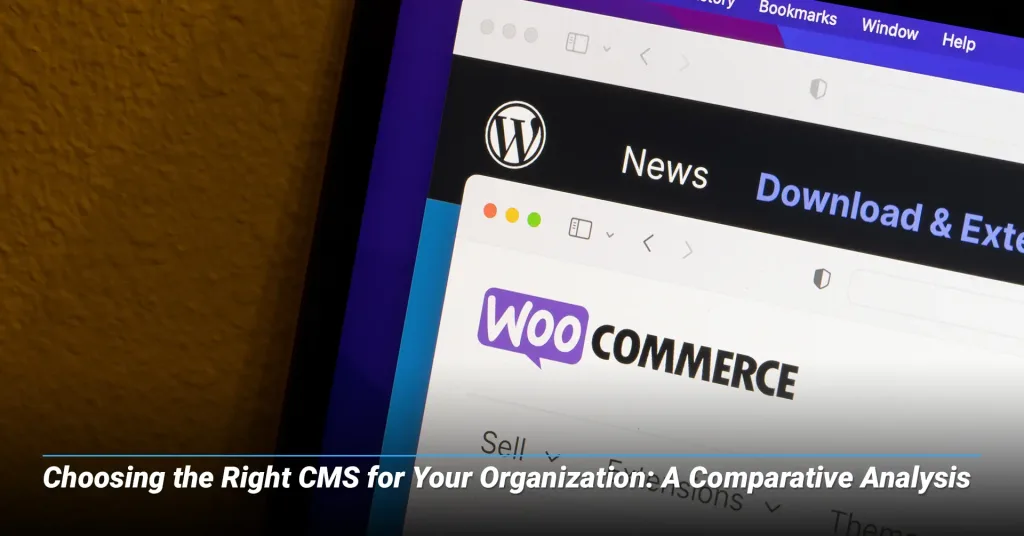
Selecting the optimal CMS is a critical decision impacting long-term digital strategy, efficiency, and budget. It requires evaluating a variety of factors and being knowledgeable about leading platforms.
A. Essential Factors for Informed Decision-Making
Consider these aspects before choosing a CMS:
- Aligning with Business Goals: Define your website's primary objectives. Is it e-commerce (Shopify, WordPress with WooCommerce), lead generation (HubSpot CMS Hub), content marketing (WordPress, Ghost), or informational presence (Wix, Squarespace)? The CMS needs to be designed to support your core mission.
- Assessing Internal Technical Skill Level: Be realistic about your team's technical expertise. Drag-and-drop builders (Wix, Squarespace) are ideal for beginner Tech-1 users. Open-source platforms like WordPress offer more features but come with a steeper learning curve.
- Evaluating Long-Term Growth Plans: Your CMS must scale with anticipated traffic, content, and new functionalities. A non-scalable platform opens the door to customers migrating to competitors and losing revenue ($5,000-$20,000+).
- Budget Considerations: Revisit the TCO analysis (Section III.C). Consider all recurring costs (hosting, premium themes/plugins, developer fees, security, maintenance) to evaluate long-term value.
B. In-Depth Look at Top CMS Platforms for SMBs
The CMS market offers diverse solutions:
- WordPress (.org vs. .com):
- WordPress.org: Self-hosted, open-source, free software. Powers 43.3% of all websites, 62.7% of the CMS market.
- Pros: Unparalleled customization (12,000+ free themes, 59,000+ free plugins). Vast community support. Highly scalable. Low initial software cost. Top-tier built-in SEO.
- Cons: Requires separate hosting/domain. Needs regular maintenance/updates. Can become complex and suffer performance-wise with too many plugins. Hidden costs for premium features, security, and developer support ($10,000-$50,000/year).
- WordPress.com: Hosted version.
- Pros: Easy to start, free plan available (limited). Removes server/update management burden.
- Cons: Less flexibility/customization than .org, free plans have ads/limited monetization.
- WordPress.org: Self-hosted, open-source, free software. Powers 43.3% of all websites, 62.7% of the CMS market.
- Wix: All-in-one website builder.
- Pros: User-friendly drag-and-drop editor, no technical skills needed. All-in-one platform with hosting/maintenance included. Rapid deployment. 24/7 customer support.
- Cons: Limited customization vs. open-source. Cannot switch templates without fully redesigning. Higher long-term costs. Limited data portability. Multisite management can be a burden.
- Shopify: Leading e-commerce platform.
- Pros: Purpose-built for online sales. Handles inventory, payments, shipping, and taxes. Excellent security/reliability. Comprehensive app store. Fully hosted solution.
- Cons: Transaction fees (unless using Shopify Payments). Higher monthly costs. Advanced features require expensive plans. Limiting for content-heavy sites.
- Squarespace: Design-focused, easy to use.
- Pros: Award-winning, professional templates. Consistent, high-quality user experience. No maintenance/updates required. Immediate access to comprehensive features.
- Cons: Less design flexibility/customization vs. open-source or Wix. Fewer third-party integrations. Higher pricing plans. Template customization can feel restrictive.
- Other Relevant Platforms:
- Joomla: Open-source, advanced user management, extensive extensions, strong community.
- Drupal: Powerful open-source, flexible content architecture, advanced permissions, multilingual, suitable for complex/enterprise sites, strong community.
- HubSpot CMS Hub: Integrated CMS/CRM, inbound marketing focus, marketing automation, personalized content.
- Webflow: Design-focused, highly custom responsive designs without direct coding, CMS Collections for structured content.
- Ghost: Separates the back-end work from the presentation front-end bloggers, Markdown support, built-in SEO, suitable for paid content.
- Magento: Highly customizable e-commerce, handles large catalogs/high volumes, extensive third-party extensions.
Why Content Marketing is Your Small Business's Superpower in the AI Search Era
Artificial intelligence (AI) is completely changing how search engines work, shifting the focus from simple keywords to understanding what people really want to find. For small businesses, this new digital landscape is a massive opportunity....C. Understanding CMS Market Share and the Value of Community Support
WordPress dominates the CMS market (43.3% of all websites, 62.7% of CMS market share). Shopify is second (6.4%), followed by Wix (3.9%) and Squarespace (3.0%). This shows there is no one-CMS solution, and different platforms work for different business needs. A larger market share means a larger, more active developer community, greater themes/plugins, extensive documentation, and readily available professional support. This fosters long-term stability, continuous innovation, and reduces obsolescence risk. Choosing a CMS with a significant market share like WordPress offers better resources and an investment with a long-term approach, mitigating "dependency on third-party developers" by diversifying talent.
Table: CMS Platform Comparison for SMBs
This table compares popular CMS options based on cost, ease of use, features, scalability, ideal use case, and pros/cons, to help SMBs make informed choices.
| Platform | Cost (Starting/Typical) | Ease of Use | Core Features/Strengths | Scalability | Ideal Use Case | Key Pros | Key Cons |
|---|---|---|---|---|---|---|---|
| WordPress.org | Free (software) + $5-$100+/month (hosting) | Moderate learning curve, user-friendly editor | Blogging, content management, vast plugins/themes, SEO tools | Highly scalable, from blogs to enterprise | Blogs, business sites, e-commerce, complex portals | Highly customizable, large community, low initial cost | Requires maintenance, can get complex, hidden costs |
| Wix | $16 - $19/month | Extremely easy, drag-and-drop | Website builder, templates, hosting included, basic e-commerce | Good for simple sites, limited growth potential | Quick setup, visually appealing, small business sites | No technical skills needed, all-inclusive pricing, rapid deployment | Limited customization, cannot switch templates, higher long-term costs |
| Shopify | $29 - $299+/month | Intuitive, drag-and-drop for e-commerce | E-commerce focused, inventory, payments, shipping, apps | Excellent for e-commerce growth | Online stores, product sales, multi-channel retail | Purpose-built for selling, robust security, comprehensive app store | Transaction fees, higher monthly costs, less content flexibility |
| Squarespace | $16 - $23/month | User-friendly, design-focused | Professional templates, integrated blogging/portfolio, scheduling | Good for portfolios/blogs, limited custom functionality | Creative portfolios, small businesses, online booking | Professional design, no maintenance needed, all features included | Less flexible for custom features, limited integrations, restrictive templates |
| HubSpot CMS Hub | Starts at $15/month (limited free) | User-friendly WYSIWYG editor | Integrated CMS/CRM, marketing automation, personalized content | Scalable for marketing-driven growth | Businesses focused on content marketing, lead generation, CRM | Seamless CRM integration, strong marketing tools, personalized content | Can be a more comprehensive marketing platform investment |
| Drupal | Free (software) + hosting costs | Higher learning curve, powerful | Flexible content architecture, advanced permissions, multilingual | Highly scalable for complex needs | Large organizations, complex data, content-heavy sites | Highly customizable, robust, strong community support | Steeper learning curve, higher development costs for customization |
| Joomla | Free (software) + hosting costs | Moderate ease of use | Extensive extensions, advanced user management | Good for mid-sized complexity | Community portals, social networking, complex business sites | Flexible, large extension library, community support | Can become complex with many extensions |
| Webflow | Subscription-based (similar to Wix/Squarespace) | Design-focused, visual builder, some learning curve | Responsive design, CMS Collections, animations | Scalable for design-driven content | Designers, agencies, businesses needing custom visual appeal | Pixel-perfect design control, strong visual builder, responsive design | Can be more expensive for complex projects, some learning curve |
The Small Business Guide to Winning Customers Through AI Search Optimization
The internet is constantly evolving, and AI in search engines is being used to find business for customers. For small to mid-size business owners, understanding and adapting to these technological advances is crucial for growth....5. Mitigating Risks: Security and Performance Considerations
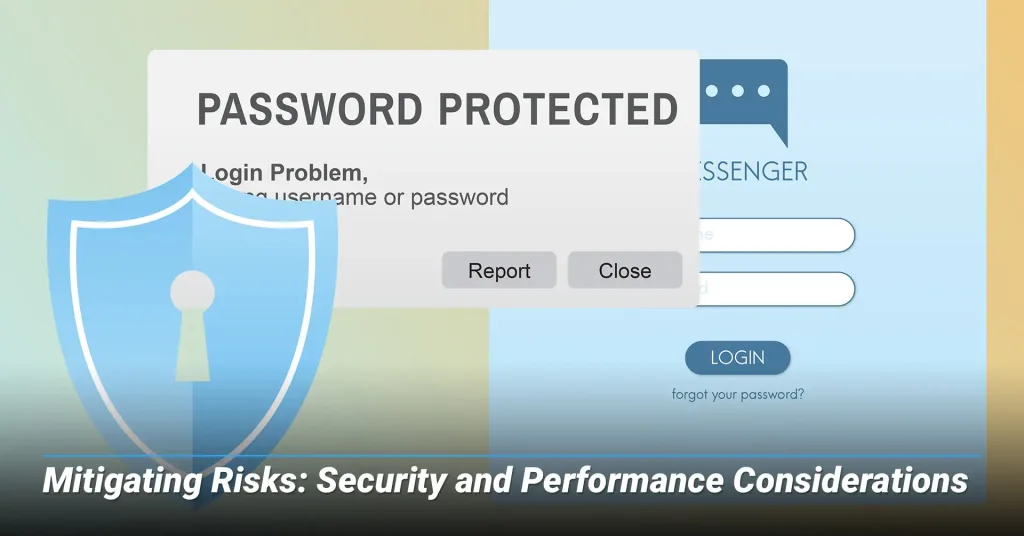
SMBs must manage security and performance risks with CMS platforms. Neglecting these can lead to decreased current and future revenue opportunities, reputational damage, and poor user experience.
A. Common CMS Security Vulnerabilities and Prevention
CMS platforms are common targets for cybercriminals due to their significance to a website. A compromised website can lead to data breaches or be used for further attacks.
- Understanding the Risks: CMS platforms are attractive targets for hackers, often due to their poor security.
- Specific Vulnerabilities:
- Brute Force Attacks: Automated attempts to guess login credentials, common on default login pages.
- SQL Injection: Exploiting unvalidated input fields to execute database attacks, leading to breaches or unauthorized access.
- Cross-Site Scripting (XSS): Injecting malicious scripts into web pages to steal user data or redirect to harmful sites.
- DDoS Attacks: Flooding a server with requests to make the website slow or inaccessible.
- File Inclusion Exploits: Vulnerabilities allowing hackers to read sensitive files or execute malicious code due to improper input validation.
- Critical Prevention Strategies:
- Regular Updates: Promptly apply updates to CMS core, themes, and plugins to patch any holes that someone could enter through.
- Strong Password Policies & Account Management: Use strong, unique passphrases, change default credentials, and restrict administrative access.
- Robust Security Measures: Implement SSL certificates, two-factor authentication, and regular data backups. Consider security plugins for self-hosted systems.
- Vulnerability Assessments: Regularly scan for weaknesses in CMS installations and custom code.
- Content Integrity: Use change management and file integrity monitoring to detect unauthorized content modifications.
B. Ensuring Optimal Website Performance
Website performance impacts user experience, conversions, and SEO/GEO. A slow website deters visitors.
- Impact on User Experience and SEO/GEO: Page load speed is a direct Google ranking factor. Slow sites frustrate users, increase bounce rates, reduce conversions, and damage UX. Websites with the wrong CMS can be 50% slower, negatively impacting SEO/GEO. A well-optimized system, through image optimization, caching, and reliable hosting, contributes to faster loading times. Mobile responsiveness is also vital for SEO/GEO and user experience.
- Factors Affecting Performance:
- Plugins and Themes: Excessive or poorly coded plugins/themes can slow page load times.
- Content Optimization: Large, unoptimized images or uncompressed media files are at the root of slow performance.
- Hosting Quality: Fundamental to site speed and uptime. Shared hosting may not offer optimal performance for growing sites.
- Optimization Strategies:
- Image Optimization: Compress images to reduce file sizes and improve load times.
- Caching: Implement caching to serve content faster.
- Minimize Unnecessary Plugins: Audit and remove non-essential plugins.
- Choose Reliable Hosting: Invest in managed or cloud-based hosting for performance optimization.
The interplay between cost, flexibility, security, and performance is crucial. A "budget-friendly" CMS, especially open-source, often requires active management and strategic investment in security and performance measures. Neglecting these leads to paying more out-of-pocket to fix in the future, whether it’s because of breaches, lost productivity, or damaged SEO/GEO. Strategic investment in quality hosting, updates, and premium plugins prevents these issues. True long-term budget-friendliness comes from informed investments in security and performance, enabled by the flexibility offered by these platforms. A low initial cost doesn't mean low TCO if security and performance cannot be protected.
Why the Majority of Small Businesses Need an E-Commerce Website
With global e-commerce sales reaching $6.86 trillion in 2025, an 8.37% increase from 2024, and mobile commerce accounting for 59% of total retail sales at $4.01 trillion, small businesses can no longer afford to ignore...6. Measuring Success: The Return on Investment (ROI) of Your CMS
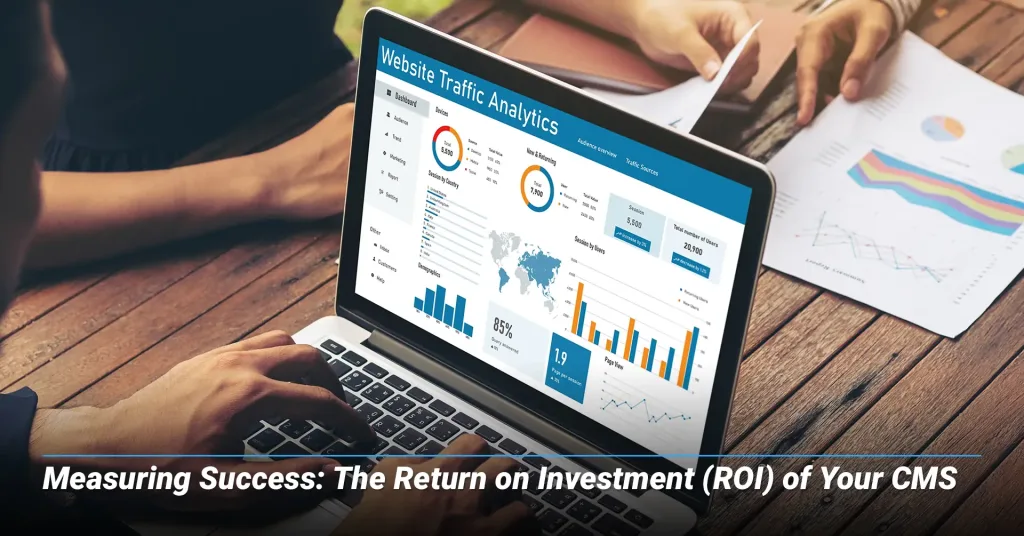
Evaluating CMS ROI justifies the investment and demonstrates value. The optimal time for ROI calculation is 3-5 years post-implementation.
A. How a CMS Drives Revenue
A well-implemented CMS contributes to revenue:
- Enhanced User Experience (UX): A CMS that supports personalized content, responsive design, and smooth integrations leads to superior UX and satisfaction. This translates to higher engagement, longer visits, and more leads/sales.
- Improved SEO Performance: CMS with built-in SEO tools and optimization for speed/mobile-friendliness ranks higher in search results. Higher rankings drive more organic traffic, converting to business opportunities without extra advertising.
- Agile Marketing Campaigns: CMS flexibility allows quick content creation/publishing, seamless integration with marketing tools, and rapid adaptation to current trends. This agility boosts lead generation and revenue.
B. How a CMS Decreases Costs
A CMS offers substantial cost reduction:
- Increased Productivity: Empowering internal teams to manage content and streamlining workflows increases productivity. This includes time saved on content authoring, image resizing, and user permissions.
- Reduced Reliance on Developers: User-friendly CMS and extensive plugin/theme ecosystems reduce the need for costly specialized development and ongoing support.
- Minimized Training and Errors: Intuitive CMS interfaces reduce learning curves and error-fixing time, boosting overall efficiency.
- Improved System Reliability: A well-maintained system, especially with managed hosting, offers better reliability and uptime, reducing costly downtime.
- Environmental Savings: Moving company information online minimizes paper usage, storage space, and shipping costs.
C. Calculating Your CMS ROI
To calculate CMS ROI, use this formula: ROI % = (Return - Cost of Investment) / Cost of Investment x 100.
- Key Data Points for Calculation:
- Cost of Investment: Total Cost of Ownership (TCO), including initial setup (licensing, hosting, domain), ongoing operational costs (premium add-ons, maintenance, security), developer fees, and training.
- Return: Material benefits such as increased leads/sales, reduced operational hours, decreased external vendor costs, and value from improved SEO/organic traffic.
- Practical Steps:
- Baseline Current Costs: Document existing website expenses or estimate costs for a traditional alternative.
- Estimate CMS-Specific Costs: Project all CMS costs over 3-5 years using the TCO breakdown.
- Project Revenue Uplift: Estimate sales/lead increases from improved UX, SEO, and marketing agility.
- Quantify Cost Savings: Calculate the monetary value of time saved by internal teams and reduced external fees.
- Apply the Formula: Input total return and cost into the ROI formula.
While initial ROI justifies investment, a flexible CMS's true value lies in continuous adaptation. Regularly monitoring metrics, user engagement, and conversion rates against costs allows SMBs to optimize their investment over time. This approach transforms the system into a strategic business tool guiding decisions for sustained growth and efficiency.
Best Tips for Startups to Win in the Age of AI Search Engine Marketing
The digital marketplace is constantly improving, with tech advancements and shifting consumer behaviors being the driving forces behind it. Businesses that fail to adapt their marketing strategies are left behind and forced to claw their...Conclusion: Empowering Your Business with the Right CMS
Content Management Systems offer an unparalleled combination of cost-effectiveness and adaptability, making them the ideal solution for small to mid-size businesses navigating the complexities of the digital landscape. They democratize web presence, enabling SMBs to achieve professional, high-performing online platforms through bypassing the generally exuberant costs or technical barriers traditionally associated with website creation methods. By understanding the benefits offered and potential considerations, businesses can make an informed choice that truly empowers their growth.
Actionable Recommendations:
- Define Your Needs Clearly: Before beginning your search for a CMS, thoroughly outline and define your website's primary purpose, essential features, content strategy, and long-term growth aspirations. This clarity will serve as your guiding principle.
- Assess Your Team's Technical Skills: Be honest about your internal team's comfort level with technology and website management. This assessment will help to select a platform with an appropriate learning curve, whether it's a drag-and-drop builder or a more robust open-source system.
- Research Thoroughly with a TCO Focus: Avoid limiting your comparison to just monthly or initial fees. Dive deep into potential recurring costs for themes, plugins, hosting, security solutions, and potential developer support. Understand the full financial picture.
- Leverage Free Trials: Many cloud-based CMS platforms offer free trials. Take advantage of these to test the interface, explore basic features, and gauge ease of use before making a financial commitment.
- Plan for Ongoing Maintenance: Regardless of your chosen CMS, allocate dedicated resources---whether internal staff time or external services---for ongoing updates, regular backups, and continuous security monitoring. Proactive maintenance is cheaper than reactive crisis management.
- Consider Professional Guidance: For complex needs, unique custom features, or if you feel overwhelmed by the options, a reputable web design agency specializing in CMS (such as ProWeb365) can provide invaluable consultation, custom design, and coaching. Their expertise can ensure your CMS implementation is strategic, efficient, and aligned with your business goals.
By making an informed choice and strategically managing your CMS, small to mid-size businesses can build a robust, adaptable, and cost-effective online presence that truly empowers their growth and competitiveness in today’s digital world.
If you need help with your website design and/or online marketing, contact us at (612) 590-8080 today! We are here to help Minnesota businesses and organizations thrive in the AI era with tailored strategies for sustainable growth.
Why a Responsive Website is Critical for Your Business in Today's Market
The internet has evolved from a one-room desktop at home or work to a portable, on-the-go browser able to connect anyone, anywhere, any time. Now, websites function as primary digital storefronts, often the first customer...Frequently Asked Questions about CMS Websites
Here are some commonly asked questions that complement the information in this article:
1. Do I still need a web designer if I use a CMS?
While a CMS empowers you to manage content in-house, it may be best to still have a web designer for initial site setup, branding, complex visual elements, or highly specialized design changes. A CMS simplifies content updates, but it's not primarily a design tool.
2. Do I need my own web server to run a CMS?
Not necessarily. Many modern hosting packages are capable of running a CMS, so you can often use your existing hosting. Cloud-based CMS solutions will often include hosting as part of their subscription, eliminating the need for you to manage a separate server.
3. Are all CMS platforms equally susceptible to security threats?
No, not all CMS platforms are equally susceptible. While all are potential targets, the level of security depends on factors such as the platform’s popularity, the user's diligence in applying updates, and the strength of password policies. Popular open-source CMS platforms are frequent targets, making regular updates and robust security measures crucial.
4. How can I mitigate performance issues on a CMS website?
To improve performance, optimize images, use a reliable hosting provider (like managed or cloud hosting), and minimize unnecessary plugins. Caching mechanisms can also help enhance speed.
5. Is it necessary to update plugins regularly?
Yes, regular updates for plugins, themes, and the CMS core are crucial. Outdated components can expose your website to significant security vulnerabilities and lead to compatibility issues or performance problems.
6. Can a CMS handle different types of digital content?
Yes, a CMS is designed to manage a wide variety of digital content. Beyond basic text, it supports blogs, image galleries, videos, downloadable documents, event listings, staff directories, and more, enabling comprehensive digital storytelling.
7. How long does it take to implement a CMS?
The implementation timeline for a CMS varies. Simple informational websites using drag-and-drop builders can be set up in minutes or hours. More complex projects, especially with open-source CMS requiring customizations or integrations, can take weeks to months, with average implementation costs being in the$5,000-$15,000 range contingent upon complexity.

Phong Nguyen
Phong brings the perfect combination of business acumen and technical expertise to digital marketing. Armed with a Bachelor of Arts degree from St. Olaf College, a master’s in business administration in Marketing from the University of St. Thomas, and SEO/GEO from “The School of Hard Knocks,” Phong founded ProWeb365.com in 2009 to help Minnesota businesses and non-profit organizations succeed online.
For over 15 years, Phong and his team’s strategic approach has combined data-driven marketing with conversion-focused design, delivering measurable results that directly impact his clients’ bottom line. Are you ready to experience what innovative digital marketing can do for your business in the age of AI search engines? Contact Us today!


